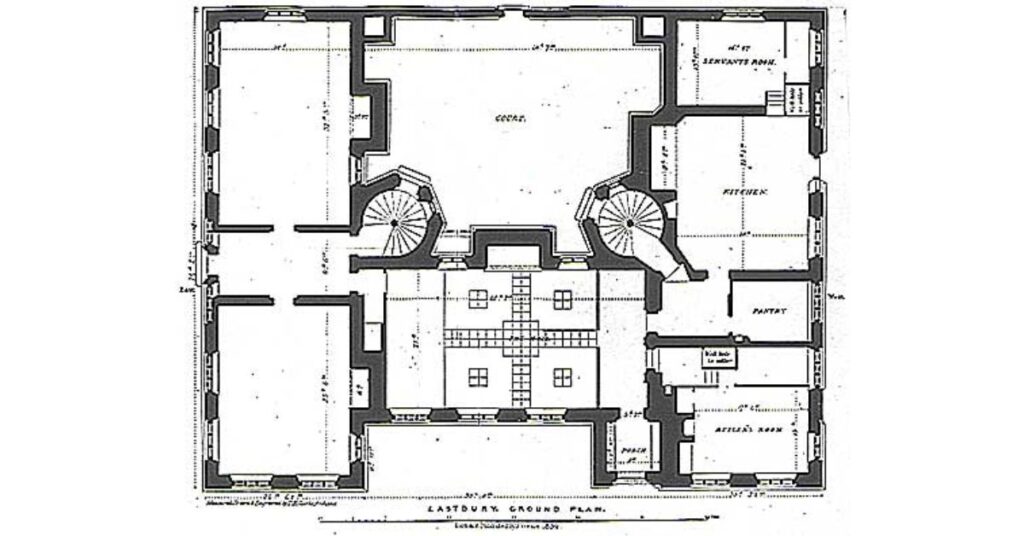Because of their large size, several people confuse manor and mansion as synonyms. But this is not the case. Here are a few noteworthy differences between manor and mansion to help understand them better
Etiology
The word mansion is derived from an old French word, “Mansio,” meaning Dwelling. Mansions originated in the 15th century when castles, built to serve as fortified settlements, were converted into mansions. Castles were built to defend the nobility against attacks or act as attack points. After the cessation of battles in the 15th century, they became symbolic and were termed mansions, i.e., castles converted into stately homes for the nobility to reside and demonstrate their influence and power.
The word manor comes from the old French word “Manoir,” meaning “dwelling place,” and was historically the primary residence of the Lord of the Manor( a title that in Anglo-Saxton or Early Medieval England meant the landholder of a rural estate. By the tenth century, most of northern Europe had been divided into manors ruled by lords and managed by squires, stewards, or their vassals. The Manor House formed the residency of the owners and had surrounding structures unrelated to residency purposes.
Purpose
Mansions were built to house powerful nobility and act as a symbol of their status while at the same time helping them build social connections.
Manors formed the administrative unit of a large piece of land referred to as the estate and were either owned by the nobility or rented out by them.
Ownership
Understanding the order of nobility is essential to better evaluate the ownership details of mansions and manors.
King/Queen >Duke > Marquess > Earl > Viscount > Baron > Knights > Squire
Mansions were owned by the higher nobility, like the ruling monarchs, dukes, earls, and viscounts, and used for brief periods as summer and winter places of residency.
Manors had varied owners ranging from higher to lower ends of nobility. In return for their achievements, knights and squires were often given large pieces of land on which they built manor houses or sometimes castles, depending on their social status. The squires lived in village manor houses and formed an essential part of the local community. Each manor house had villages, churches, and estates surrounding it, owned and managed by the lower end of the nobility and their vassals.
Location
Mansions are in varied locations, from the top of a mountain to the heart of the city, depending on whether they were rebuilt from converted fortresses, castles converted into mansions or town mansions built as status symbols.
Manor houses were usually located in rural areas and surrounded by villages and agricultural lands.
Size
While the size of a manor ranged from 750-1500 acres, manor houses were a part of the estate and a smaller size than the houses of nobles.

Mansions had a 5000-8000 square feet structure sitting amid an acreage (acres of land).
Number of Rooms
Mansions usually had at least 5-6 bedrooms with other rooms like a living room, dining room, kitchen, family room, library office, bathrooms, and possibly a guest suite. They had separate laundry and storage areas.
The servant’s quarters were in the margins of the house in garrets and basements. Occasionally, wings were created in the main house for separate accommodation for indoor and outdoor servants.
The grooms ( people taking care of the horses ) usually slept above the stable.
Manors usually consisted of a Great Hall, a Solar ( private living and sleeping quarters of the family in the house’s upper story), a kitchen, and a buttery ( a large cellar room for storing food and drinks ).
The manor house also served as the manorial court presided by the Lord and overseen by stewards and haywards.
The servant’s quarters were located on the ground floors or basements, and they were required to operate by a ground plan ( use the back stairs, work invisibly when the family was asleep, or work in a room when the family was not using it.

Types
Types of mansions
- Colonial
- Neoclassical
- Cape Cod
- Italianate
- American-Style
Types of manors
- English Manors
- Elizabethan Manor
- Jacobean Manor
| Characteristics | Mansion | Manor |
| Etiology | The French word “Mansio.” | The French word “Manoir.” |
| Size | Larger in size | Smaller in size |
| Purpose of Building | Converting fortified castles into residences | Forming, managing, and controlling an estate |
| Ownership | The higher end of nobility | Mid to lower end of nobility |
| Occupied by | Kings, earls, dukes | Knights, stewards |
| Surrounded by | Acres of cultivated or uncultivated land | Estate, churches, villages |
| Location | Hamlets to towns | Rural countryside |
| Residency | It may or may not be occupied at all times | Occupied at all times |
| Area Covered | Only house covered 5000-7000 square feet | 750-1500 acres |
| Number of Rooms | At least 5-6 suite bedrooms with guest bedrooms | It depended on the social status of the knight or nobleman that owned the manor |
| Added Wings | Present | Absent |
| Servants Quarters | At the margin of the building | In the basement |







